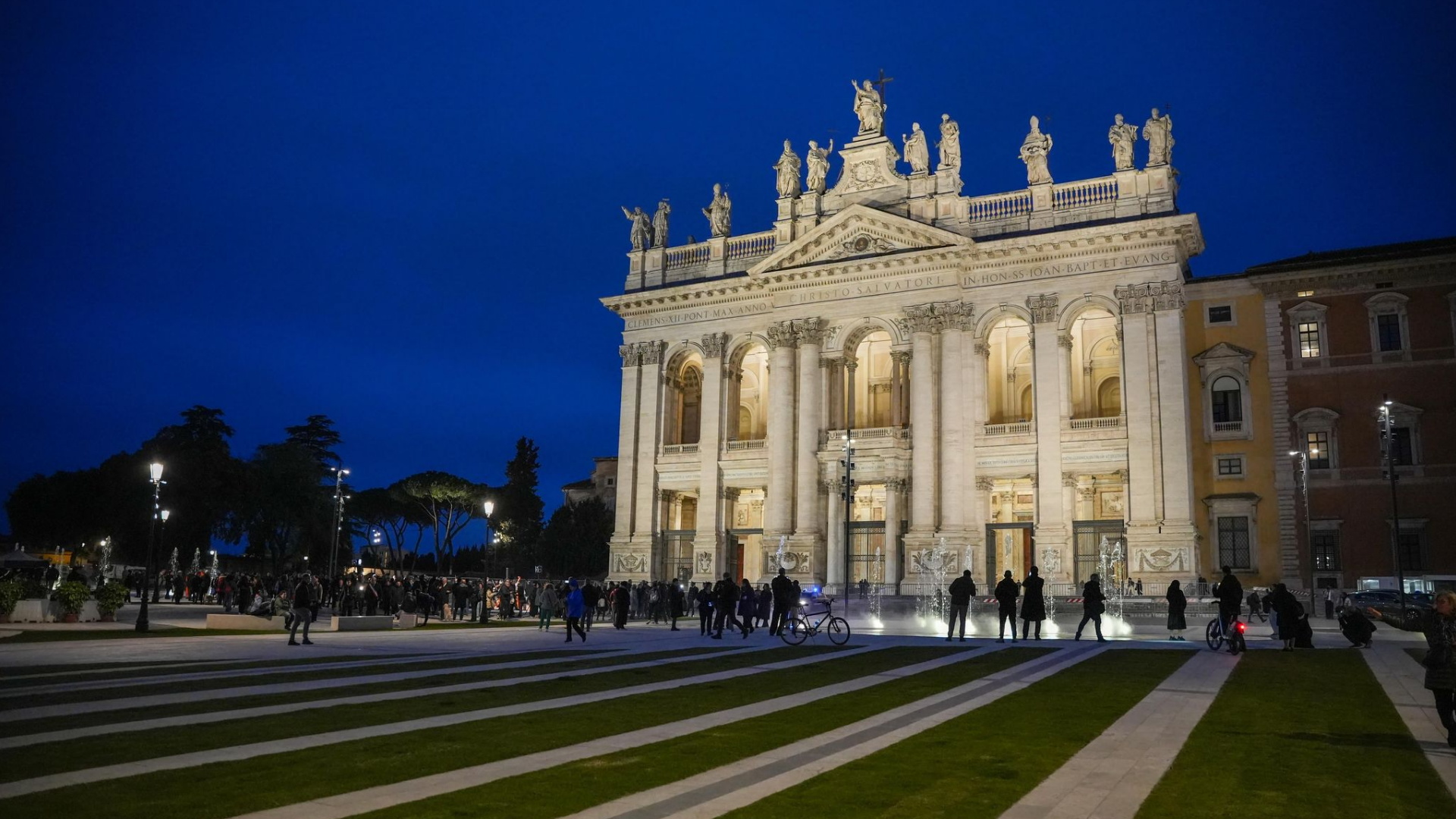
Among the most important squares in Rome, we must mention Piazza San Giovanni in Laterano: a real journey through the history of the Church, which includes the Basilica of Saint John Lateran, the Baptistery, the Holy Stairs and the Sancta Sanctorum, the Obelisk and the Lateran Palace.
Enclosed between Via Merulana, the Aurelian Walls, and Porta San Giovanni, the square owes its name to the Papal Archbasilica Major Cathedral of the Most Holy Savior and of Saints John the Baptist and John the Evangelist in the Lateran, the Basilica of St. John Lateran, the 'Mother of all churches in the world.' It represents the ideal trait d'union between the pagan and Christian eras. It was born as a building for public meetings and the administration of justice. With the spread of the new creed, it became a majestic ecclesiastical structure, suitable to accommodate a large number of believers. It was built on the same site as the one erected by Constantine, around 314, on land formerly owned by the noble Lateran family, from which the whole area takes its name. In his Annals, Tacitus tells that the houses and land owned by the Lateran family were confiscated from them by Emperor Nero after the conspiracy of the "Pisoni": the consul Plautius conspired, failing, against the emperor Nero who condemned him to death and deprived his people of properties and land, in favor of the Imperial Treasury.
During the Middle Ages, and until the interventions by Domenico Fontana, wanted by Pope Sixtus V, the square turned to a fortified citadel, the Campus Lateranensis, which extended from today's Basilica to the area of the Sanctuary of the Holy Stairs. The Sanctuary houses the Sancta Sanctorum - the chapel of the Popes in which the image of the Holy Savior - and the Holy Stairs, which, according to an ancient Christian tradition, was transported from Jerusalem to Rome from the Praetorium of Pilate by the will of St. Helen, Empress mother of Constantine. The same tradition tells that the 28 steps that form it would be the same that Jesus climbed several times on the day of his death sentence in the palace of Pontius Pilate.
In front of the Holy Staircase is the Lateran Palace. The building stands on the site of the ancient Patriarchium, which served as the residence of popes for about a millennium starting from the 4th century. Damaged several times over the centuries, by earthquakes, raids, and invasions, and punctually restored, it was devastated by a fire in 1308; thus, upon their return to Rome in 1377 after the Avignon Papacy, the popes fixed their residence at the Vatican. The urban redevelopment of the entire complex took place at the end of the 16th century at the behest of Sixtus V, who entrusted its reconstruction to Domenico Fontana, his favorite architect. Smaller than the previous one, the new palace was supposed to be the papal summer residence, but the popes continued to prefer the Vatican seat and the Quirinale. In the following centuries, the palace had different uses: it was used as a hospital, as a hospice, as an archive of the Papal State, as the seat of the Gregorian Museum from 1838 to 1960, and finally as the seat of the Vicariate. Since 1987, the main floor has housed the Vatican Historical Museum.
In 1588, between the rear elevation of the Basilica of St. John and the facade of the transept, Domenico Fontana, the architect of Pope Sixtus V, erected the Lateran Obelisk, the world's tallest obelisk of Egyptian origin. It is made of red granite; it is 32,18 meters high, and, including the cross and base, it reaches 45.70 meters. Its weight is 455 tons. The Lateran Obelisk was the last of the Capitoline obelisks brought to Rome. It was built by Tutmosis III (1481 B.C. - March 4, 1425 B.C.), pharaoh of the 18th Egyptian dynasty, in honor of his father Tutmosis IV and stood in front of the temple of the god Amon at Thebes. A beautiful fountain, fed by the Acquedotto Felice and dedicated to San Giovanni Evangelista, was placed at its foot.
In front of the Lateran Obelisk, you can admire the oldest monumental Baptistery, whose title is San Giovanni in Fonte. It was built in the 4th century by Constantine on a 1st-century villa and a 2nd-century thermal building, as a place of worship for the Christian community. The external frieze, decorated with the coats of arms of the Chigi family, is the work of Francesco Borromini (1657). The entrance was created with a fragment of a Roman architrave. The interior has an octagonal plan at the center of which, inside a 16th-century circular enclosure, was placed the baptismal font: a magnificent green basalt urn with a bronze cover.
Every First of May, in front of the Basilica there is a famous concert, where celebrated Italian and international musicians alternate on stage.
Between April 2024 and 27 March 2025, a fifteen thousand square metre area of the square, including two thousand square metres of greenery, has been redeveloped, and approximately 320 thousand sanpietrini and 80 thousand stone slabs have been repositioned. The new paving evokes the cosmatesque style that characterises the one inside the Basilica and was made with traditional Roman stones including sanpietrini, basalt and travertine in three shades, interspersed with turf to ensure the permeability of the soil. On the square stand 12 flush fountains whose lighting creates suggestive water features. Underneath the square run 2000 metres of water pipes, 1400 metres of thermoplastic pipes and there are 3 storage tanks for water recirculation and reuse.
Every day, the new fountains gush from 8 a.m. to midnight with water games, while from midnight to 8 a.m. you can admire the characteristic mirror of water in which the magnificent cathedral of Rome reflects.
Photo: Roma Capitale
Basilika San Giovanni in Laterano
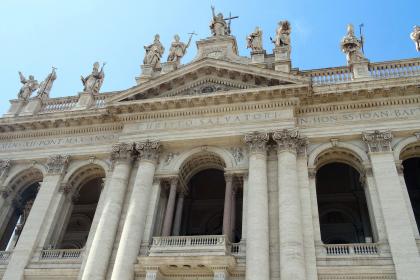
 Condividi
Condividi
Scala Santa - Heilige Treppe
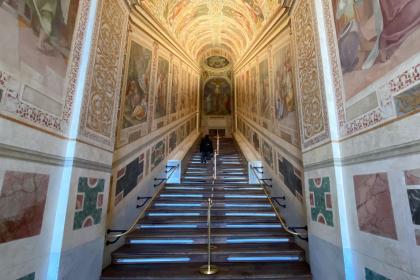
 Condividi
Condividi
Lateran Palace
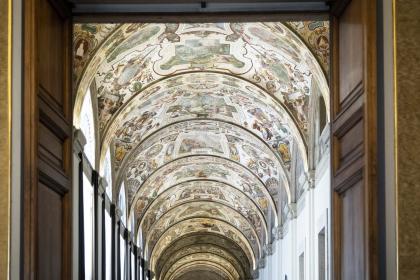
 Condividi
Condividi
The Lateran Baptistery
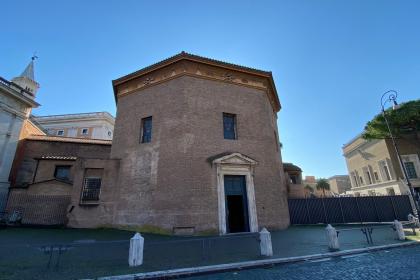
 Condividi
Condividi
The Lateran Obelisk
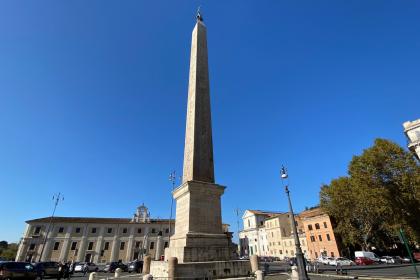
 Condividi
Condividi
Informationen
 Condividi
Condividi
Location
Um mehr über alle barrierefreien Dienste zu erfahren, besuchen Sie den Abschnitt barrierefreies Rom.











































